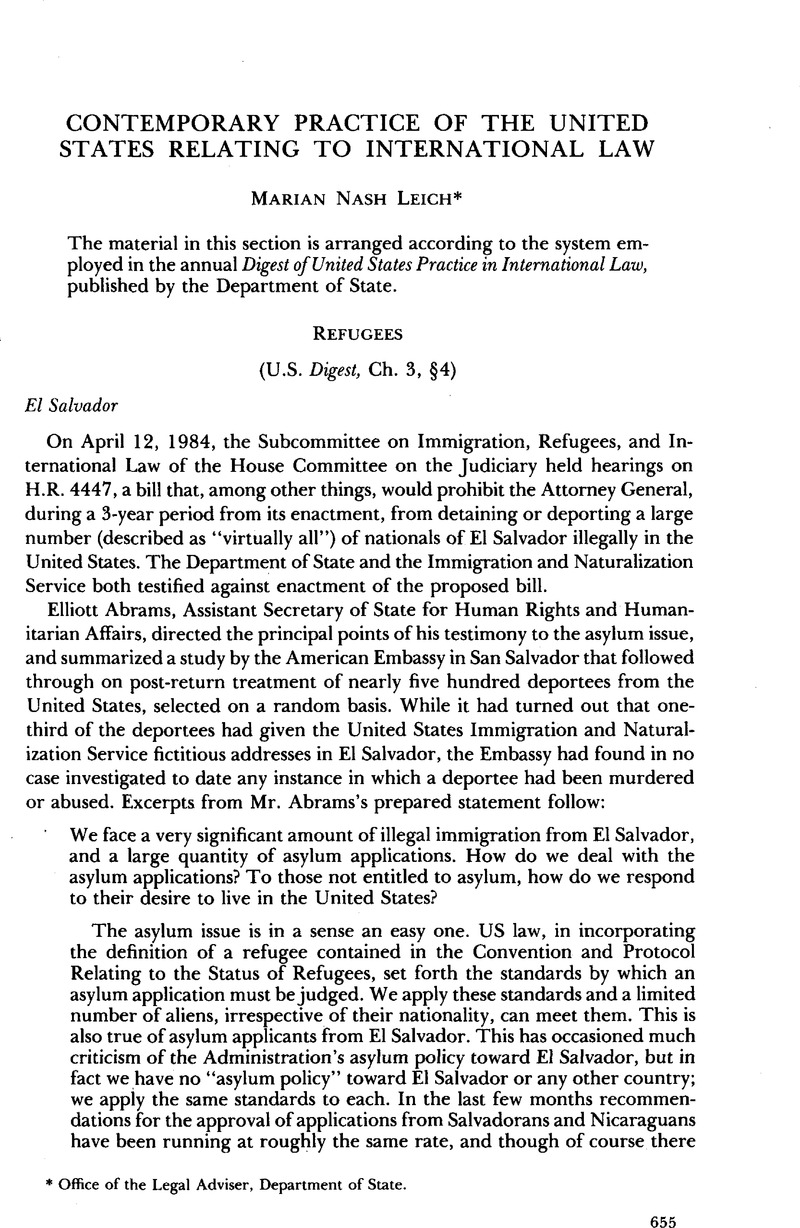No CrossRef data available.
Published online by Cambridge University Press: 23 March 2017

1 Dept. of State File No. P84 0059-1830.
1 Articles 9 and 43 of the Vienna Convention on Diplomatic Relations read:
Article 9
1. The receiving State may at any time and without having to explain its decision, notify the sending State that the head of the mission or any member of the diplomatic staff of the mission is persona non grata or that any other member of the staff of the mission is not acceptable. In any such case, the sending State shall, as appropriate, either recall the person concerned or terminate his functions with the mission. A person may be declared non grata or not acceptable before arriving in the territory of the receiving State.
2. If the sending State refuses or fails within a reasonable period to carry out its obligations under paragraph 1 of this Article, the receiving State may refuse to recognize the person concerned as a member of the mission.
Article 43
The function of a diplomatic agent comes to an end, inter alia:
(a) on notification by the sending State to the receiving State that the function of the diplomatic agent has come to an end;
(b) on notification by the receiving State to the sending State that, in accordance with paragraph 2 of Article 9, it refuses to recognize the diplomatic agent as a member of the mission.
TIAS No. 7502, 23 UST 3227, 3233-34, 3247; entered into force for the United States Dec. 13, 1972.
2 Dept. of State File No. P84 0056-1827.
1 For the text, see Dept. of State File No. P84 0082-2181.
1 For earlier antitrust cooperative arrangements between the United States and Canada (superseded under para. 12 of the Memorandum of Understanding), see 6 M. Whiteman, Digest of International Law 159-60 (1968), and Dept. of Justice news release, unn., Nov. 3, 1969, at Dept. of State File No. INCO 15-1 CAN. The Principles for Guidance to Officials for Follow-Up Meetings on the Extraterritorial Application of Antitrust Laws, issued as a joint communiqué by U.S. Attorney General Griffin B. Bell and Canadian Minister for Justice and Attorney General Ron Basford on June 17, 1977, may be found at id., No. P84 0059-1896.
2 The text of the Memorandum of Understanding between the Government of the United States of America and the Government of Canada as to Notification, Consultation and Cooperation with Respect to the Application of National Antitrust Laws, signed at Ottawa, Mar. 9, 1984, may be found at Dept. of State File No. P84 0059-1888, and at Files, L/T, and is reprinted in 23 ILM 275 (1984). An Agreement between the United States and Australia on Cooperation in Antitrust Matters, concluded at Washington, June 29, 1982, is at TIAS No. 10365, entered into force June 29, 1982.
An Agreement between the United States and the Federal Republic of Germany Relating to Mutual Cooperation Regarding Restrictive Business Practices, signed at Bonn, June 23, 1976, is at TIAS No. 8291, 27 UST 1956, entered into force Sept. 11, 1976.
1 Dept. of State File No. P84 0057-0363.